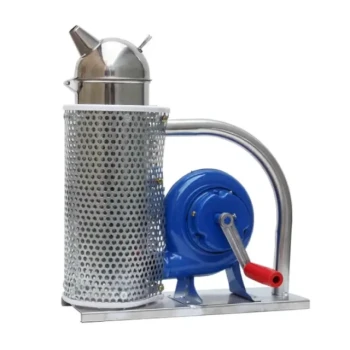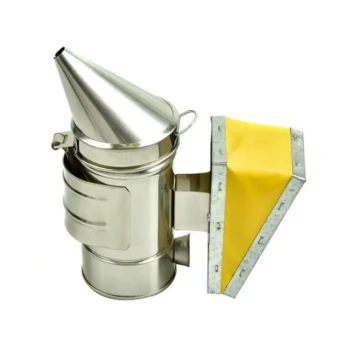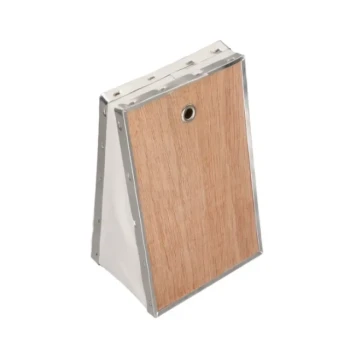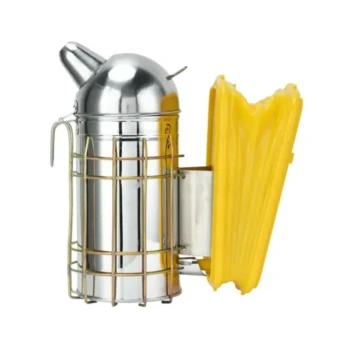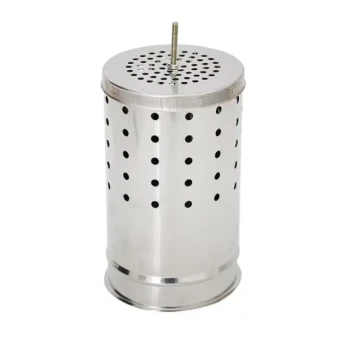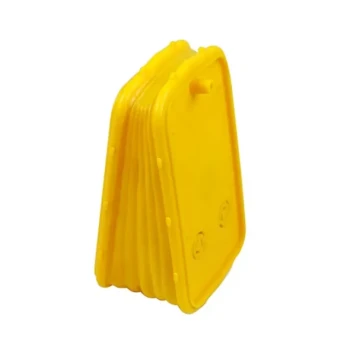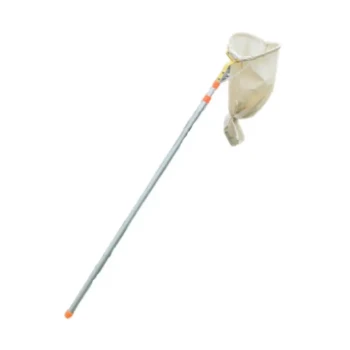For effective and humane beekeeping, smoke should be applied gently and strategically, never in large, hot clouds. The process begins with a few light puffs at the hive entrance, followed by a brief wait. After cracking the lid, apply a few more puffs underneath, wait another minute for the bees to react, and then proceed with your inspection, using smoke sparingly only when necessary to manage restless behavior.
The core principle is not to subdue the bees, but to interrupt their lines of communication. Proper use of smoke masks the alarm pheromones that trigger a defensive response, allowing for a safer and less stressful inspection for both the beekeeper and the colony.
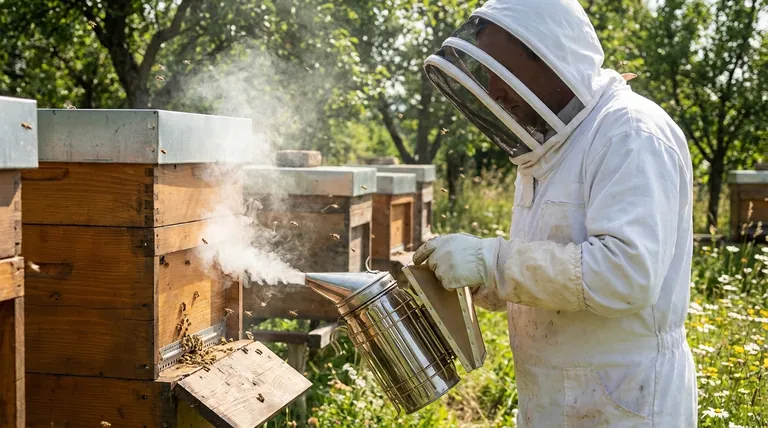
Understanding How Smoke Actually Works
To use a smoker effectively, you must first understand its effect on bee behavior. It is not a sedative, but a tool that leverages the colony's innate instincts.
Masking Alarm Pheromones
When a hive perceives a threat, guard bees release an alarm pheromone. This chemical signal instantly alerts the rest of the colony to the danger, triggering a coordinated defensive response—in other words, stinging.
Cool, white smoke effectively masks and scrambles these pheromones. It prevents the alarm signal from spreading, thereby short-circuiting the defensive chain reaction before it can begin.
Triggering a Feeding Instinct
As a secondary effect, the presence of smoke can trigger a remote ancestral memory of a forest fire. In response, bees will begin to engorge themselves on honey in preparation for potentially abandoning the hive.
A bee with a full stomach is physically less able to curl its abdomen to sting effectively. This makes the colony generally more docile and preoccupied.
The Correct Technique: A Step-by-Step Guide
Methodology is everything. Applying smoke is a dialogue with the hive, and each step has a specific purpose.
Before You Open the Hive
Think of your first puffs of smoke as a polite knock on the door. Apply two to three gentle puffs directly into the hive entrance.
Wait for 30 to 60 seconds. This gives the smoke time to circulate and the guard bees time to process the signal and begin consuming honey.
The Initial Application
After waiting, use your hive tool to crack open the outer and inner covers just enough to create a small gap. Direct a few more puffs of smoke across the tops of the frames.
Wait another full minute. This is a critical step many beekeepers rush. This pause allows the smoke to fully permeate the hive and interrupt the alarm communication among the bees you are about to disturb.
During the Inspection
Your goal is to use as little smoke as possible. Observe the bees' behavior. If you hear a rising pitch in their buzzing or see them becoming agitated and flying at you, it's time for a little more smoke.
Use the smoker to gently waft smoke over the specific area you are working. You can also use gentle puffs to move bees off a frame edge so they are not crushed when you move components.
After a Sting
If you are stung, the bee's stinger releases a potent alarm pheromone that will attract more bees to that exact spot. Immediately smoke the affected area on your suit or skin to mask this signal and prevent a chain reaction of stings.
Understanding the Trade-offs: The Dangers of Misuse
Using smoke incorrectly can be more dangerous than using no smoke at all. It is crucial to recognize the line between effective use and harmful agitation.
The Risk of Hot, Dark Smoke
Your smoker should produce cool, white smoke. This is achieved with good airflow and the right fuel.
Hot, dark, or sooty smoke is counterproductive. It is seen as a direct threat, can harm the bees' delicate respiratory systems, and will make the colony far more aggressive, not less.
The Problem with Too Much Smoke
More is not better. Blasting a hive with excessive smoke will overwhelm and agitate the colony. Instead of simply masking pheromones, it creates a chaotic and stressful environment.
Over-smoking can disorient the bees, disrupt hive activity for hours, and may even cause the queen to stop laying.
Making the Right Choice for Your Goal
Always adapt your smoking technique to the temperament of the hive and the goal of your inspection.
- If your primary focus is a quick, routine check: Use minimal smoke, focusing only on the entrance and under the lid before you begin.
- If your primary focus is a complex manipulation (like a split or requeening): Use smoke more deliberately to direct bees away from your work area, but still apply it gently and only when needed.
- If your primary focus is managing a known defensive hive: Be methodical and patient, ensuring you give the smoke adequate time to mask pheromones before proceeding with each step.
Ultimately, mastering the smoker is about learning to communicate with your bees, not dominate them.
Summary Table:
| Step | Action | Purpose |
|---|---|---|
| Before Opening | 2-3 gentle puffs at entrance | Alert the colony, trigger feeding instinct |
| Initial Application | Puffs under lid after cracking | Mask alarm pheromones before full disturbance |
| During Inspection | Light, targeted puffs only if needed | Manage agitation without overwhelming bees |
| After a Sting | Smoke the affected area immediately | Mask the potent alarm pheromone from the sting |
Upgrade Your Beekeeping Operations with Professional-Grade Equipment
Mastering the smoker is just one part of effective apiary management. Equip your commercial beekeeping business or distribution company with the reliable, high-performance tools needed for success.
HONESTBEE supplies durable smokers, protective gear, and essential beekeeping supplies designed for the demands of commercial apiaries and equipment distributors. We help you work smarter and safer, protecting your investment in every hive.
Contact our wholesale team today to discuss your equipment needs and volume pricing.
Visual Guide
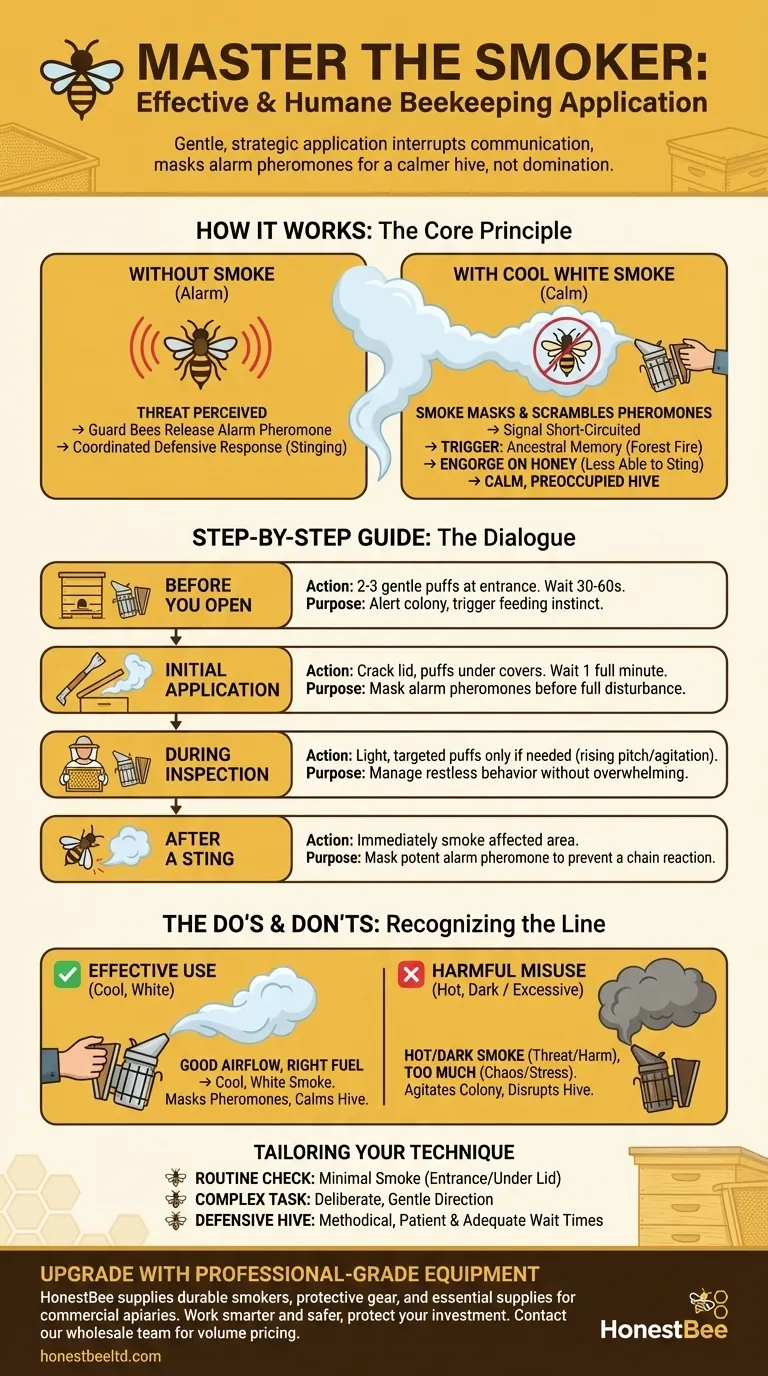
Related Products
- Stainless Steel Honey Bee Smoker Hive and Honeycomb Smoker for Beekeeping
- 54-Piece Smoker Fuel Pellets for Beekeeping Beehive Smoker Fuel
- Stainless Steel Electric Beehive Smoker for Beekeeping and Bee Keeper Use
- Premium Traditional Copper Bee Smoker with Bellows
- Economy Galvanized Beekeeping Honey Bee Smoker for Wholesale
People Also Ask
- What is the proper technique for lighting a bee smoker? Master the Layered Fire Method for Calm Hives
- What is the primary purpose of using smoke in beekeeping? Calm Bees for Safer Hive Management
- How long does it take to clean a bee smoker? From 15-Minute Quick Fix to 10-Hour Deep Clean
- What is the smoke that beekeepers use? The Secret to Safe and Calm Hive Inspections
- What is a bee smoker and what is its primary purpose? Master Safe Hive Inspections








